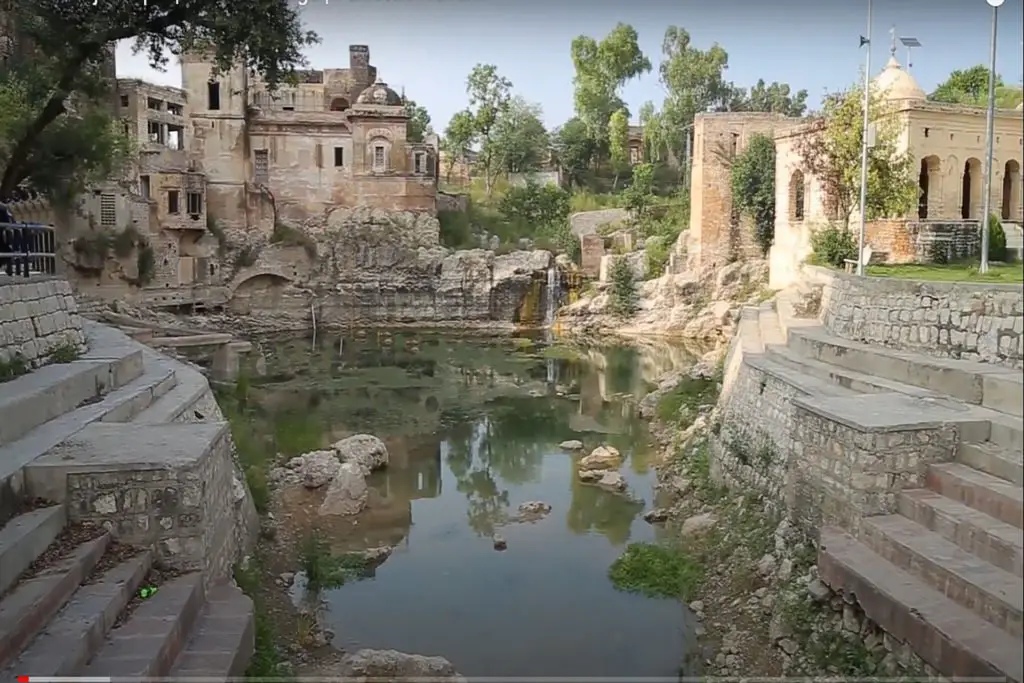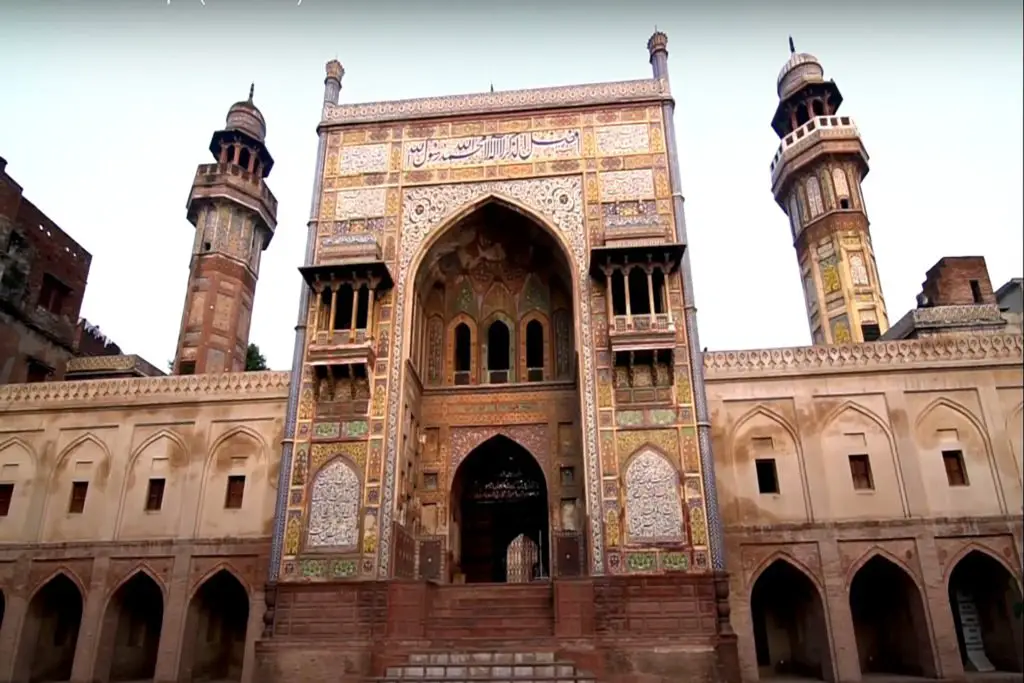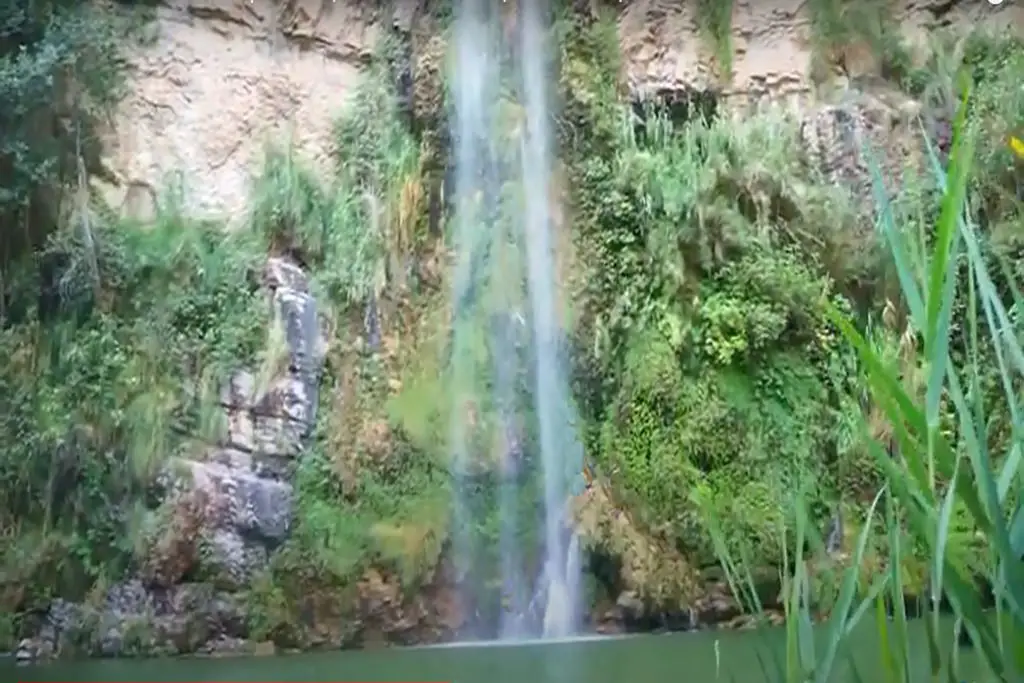Katas Raj Temples, also known as the Qila Katas, is a complex of several Hindu temples connected to one another by means of pilgrimages. The temple building is surrounded by a pool called Katas which is considered sacred by Hindus. The building is located in the Potohar Plateau region of Punjab province in Pakistan. The temples are located near the town of Choa Saidan Shah and are close to the M2 section of the Motorway.
Temples played a key role in the Hindu history of Mahābhārata, in which temples are believed to have been the site where the Pandava brothers spent most of their exile. Traditionally, Hindus believe that it is a place where brothers and sisters participate in rituals with the Yaksha, as described in the Yaksha Prashna. Another tradition has it that the Hindu god Krishna laid the foundation of the temple, and he laid out a hand-painted ski on it.
The temples were visited by former Indian Deputy Prime Minister Lal Krishna Advani in 2005. In 2006, the Pakistani government began work on temple renovations, and further improvements were announced in 2017.
Location of Katas Raj Temples
The Katas Raj Temple building is part of the Choa Saidanshah municipal committee. The Katas Raj Temple complex is located near Kallar Kahar and is located at an altitude of 2,000 meters. About 100 km from the main Hindu pilgrimage site – the Tilla Jogian complex.
Katas Raj is located near the Kallar Kahar intersection on the M2 Motorway connecting Islamabad and Lahore. The building is located on the side of the road linking Kallar Kahar with Choa Saidan Shah near the village of Dulmial.
Salt Ranges contain fossils that are still hidden underground. A number of skeletal bones and spinal cord animals have been found in nearby areas. Prehistoric axes and knives made of granite, as well as artifacts such as terracotta bangles and pottery, have also been found in the Katasraj area. The latter were found to be similar to those excavated at Harappa, but not yet dated.
Hindu’s Beliefs for Katas Raj
Hindu tradition holds that temples originated in the Mahabharata period, and it is believed that this was where the Pandava brothers spent most of their exile. Hindus are also believed to be the place where the Pandavas take part in the garbage dump with the Yakshas, as described in Yaksha Prashna.
The founder of the Sikh faith, Guru Nanak, is believed to have visited the temples of Katas Raj, as the area became a popular site for pilgrims. Sikh Governor Ranjit Singh also regularly visited the site. He visited the Vaisakhi festival site in 1806, December 1818, and again in 1824.
The building was a popular Hindu pilgrimage before 1947 in British India, with large numbers visiting Shivratri. Following the Separation, the local Hindu community left the region for India. Hindu-Muslim relations were good, and local Muslims accompanied Hindus to the nearby town of Choa Saiden Shah, from where the local Hindus traveled to India.
Indian pilgrims continued to visit the temple during the Shivratri festival until the 1965 Indo-Pakistani War, after which the Indian pilgrims were not allowed to visit again until 1984.
Katas raj temples fell into disrepair in the decades following the Separation and faced neglect. Pakistani Hindus would continue to visit the site from time to time, but they were unable to maintain a comprehensive structure.
The pool was littered with garbage, while the locals used the lake for entertainment. Indian Hindu pilgrims were banned from visiting the area in 1956, 1960, and after the Indo-Pakistani war in 1965. Indian travelers were not allowed to visit the area again until 1984.
Former Indian Deputy Prime Minister Lal Krishna Advani visited Katas Raj in 2005 and expressed dissatisfaction with the plight of the area. In 2005 Pakistan proposed renovation of the temple building, and in 2006 began a restoration project to clean up the sacred pool, paint and renovate some of the temples, and install the experienced blue boards around the temple.
In 2006, around 300 Hindu pilgrims from India made their way to the Shivratri festival at the temple site, marking a brief annual tradition for some Indian visitors. However, these visits ceased after the 2008 Mumbai attacks. In 2010, a significant congregation of 2,000 Pakistani Hindus continued the practice of celebrating Shivratri at the temple, and in 2011, pilgrims from as far as Karachi also made the journey to participate in the festivities.
A Hindu couple’s wedding was organized during the Shivratri festival of that year for the Khyber Pakhtunkhwa province couple whose families had lost much of their property during the 2010 Pakistani floods.
In January 2017, the Pakistani government began installing shikhara in temples. In February 2017, 200 pilgrims from India went to the temple to participate in the Katas Raj Dham festival. In 2018, Pakistan issued visas to 139 Hindu travelers to visit Katas Raj.
Katas Raj temples are considered to be the second most sacred place for Hindus in the historic Punjab region, after the Jwalamukhi temple in modern Himachal Pradesh.
Katas Raj Pond
It is said that the pool of Katas Raj temples was created from the tears of Shiva, after wandering around the Earth without comfort after the death of his wife Sati. The lake replaces two canals and 15 marlas, with a maximum depth of 20 meters.
The temples found their sanctity in the myth that after the death of his wife Sati, the Hindu god Shiva wandered aimlessly, while some of his tears were collected in two pools, one of which was a pool where temples were located at Katas Raj, while some of the tears were collected in two pools. One is in Pushkar, near the famous Sufi pilgrimage of Ajmer.
Another version of the legend tells of two lakes in Katasraj and Nainital. Another version of Shiva mythology involves the death of Shiva’s horse Katas instead of his partner Sati.
Katas Raj History
The Katas Raj Temple is traditionally believed to date back to the Mahabharata period. Many legends are associated with temples. The five Pandava brothers, mentioned in the Mahabharata, are said to have lived here for most of their exile.
The building is traditionally believed to be the place where the Pandava brothers were challenged by the Yaksha before they could drink in the lake. Four brothers failed, and the Yaksha people survived. His fifth brother, Judith, joined Yaksha in a riddle and won him over with his wisdom, thus bringing his brothers back to life.
Other legends also say that the first Shiva Ling (Shiv-Ling) was in Katas. Other ancient manuscripts also refer to Katas as Janam Bhoomi (birthplace) of the Hindu birthplace of Rama, and of Ayodhya, but this has become an issue. The oral tradition of the local Hindus never referred to it as the birthplace of Ramah or its annual rituals.
A lake in the area is believed to be a Hindu shedding Shiva’s tears after the death of his wife Sati. The water in the lake is very clear. Water is also believed to wash away one of his sins, as the lake is associated with Shiva.
In 2012, and 2017, it was noted that the water level in the lake was declining due to the use of water in a nearby cement factory, as well as the planting of water-loving eucalyptus trees, which reduced the water level in the area. After the 2012 episode, the local cement industry was shut down by government officials to restore water.
The Katas area has Satgraha, a collection of seven ancient temples, remnants of a Buddhist stupa, five other medieval temples, and Hasilis scattered near a lake that is considered sacred to Hindus. katas raj temple
Katas raj temples are built mostly on square plots. The height of the small temples appears to form a series of corners with narrow rows of columns, crowned with ribs. Seven temples are constructed in the form of structures such as the Kashmiri temple, with teeth, battered pillars, trefoil arches, and pointed roofs. katas raj temple katas raj temple katas raj temple







